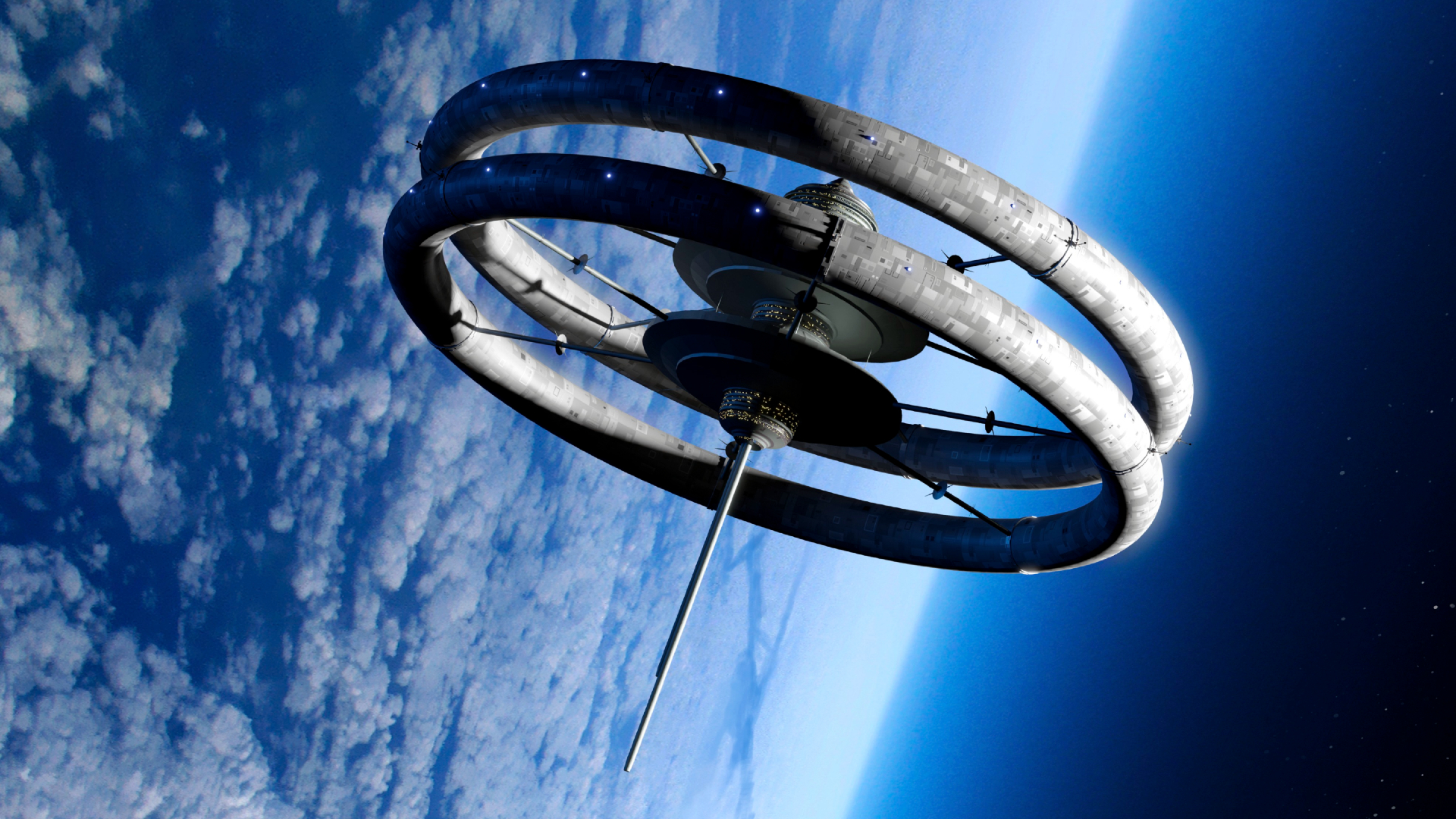Gantry Delay Pushes Back 1st Soyuz Flight from Guiana
The maiden flight of Russia's veteran Soyuz rocket from Europe's Guiana Space Center here is likely to slip by severalmonths, to mid-2009, following delays in production of a specially designedmobile gantry that is being built in Russia, according to government andindustry officials.
Unlike almost every otheraspect of the Soyuz launchinstallation, the mobile gantry is not a copy of the Soyuz launchinstallations long in use at Russia's Plesetsk and Baikonur cosmodromes. For Europe's Soyuz operations, the satellite payload will be placed upright onto the vehiclerather than integrated horizontally as is the common Russian practice.
Whether the mid-2009inaugural-launch date can be maintained will depend in part on how smoothly theRussian engineering teams due to arrive here in March are integrated into dailyoperations.
Around 200 Russian Soyuztechnicians — few of them fluent in English or French — are being brought tothe spaceport to complete construction ofthe launch site, which is some 15 kilometers distant from Europe's Ariane 5launch operations.
Most commercialsatellites launched here are U.S.-built or have U.S.-made parts. As a result,security requirements insisted on by, among others, the U.S. government, made it necessary to separate the Russian teams and the Soyuz operation from therest of the Guiana launch base.
In addition to theRussian construction crews to be stationed here in 2008, up to 250 Russianlaunch specialists will arrive for each month-long Soyuz launch campaign.Current estimates are that two to four Soyuz vehicles will be launched peryear.
"When the first boatfull of Russians arrives and the 200 Russians begin working with us — only thenwill we have a clear idea of how long it will take to finish the installation,"said Frederic Munoz, deputy director for ground operations at the French spaceagency, CNES. "They were scheduled to arrive in January, but the delay inthe gantry's completion automatically delayed their arrival by three months."
Breaking space news, the latest updates on rocket launches, skywatching events and more!
Preparing the launch padand operating Soyuz launches will require an unprecedented collaborationbetween the French and European teams on one side, and the Russian experts onthe other. Rocket technology is typically viewed around the world as somethingof strategic national importance.
But Munoz said theRussian and French teams have been able to work through their initialdifficulties. For example, he said, Russia's initial refusal to turn over toFrench authorities the exact formula for the kerosene used to power Soyuzengines was overcome by French insistence that, for environmental purposes,French authorities needed to know the ingredients. In another example, Russia has agreed to share third-party liability responsibility with France for Soyuz operationseven though the launches are from French territory.
The medium-lift Soyuzrocket, which by most measures is the most reliable launch vehicle ever built,is being brought here as part of an agreement between the French government,the European Space Agency (ESA) and the Russian space agency, Roskosmos.
France is paying some 63 percent of ESA's share of buildingthe Soyuz installation. The total ESA investment was estimated at 223 millioneuros ($328 million at current exchange rates) in 2002.
The Arianespace launchconsortium of Evry, France, is paying an additional 121 million euros forRussian equipment through a low-interest loan from the European Investment Bankthat was backed by the French government.
The European Union'sexecutive commission has agreed to invest about 34 million euros into theproject as part of its program to support new infrastructure construction.
To comply with Space Center requirements on safety and security, minor modifications to the Soyuztelemetry system are being made for the European version.
The Soyuz vehicle to belaunched here will be able to carry a commercial telecommunications satelliteweighing 3,000 kilograms into the standard geostationary transfer orbit — 50percent more capacity than the same vehicle operated from Russia's BaikonurCosmodrome in Kazakhstan, because of the Guiana Space Center's proximity to theequator.
Arianespace, Roskosmosand Russian industry representatives in June signed a contract for the firstfour Soyuz rockets, but Arianespace officials say a new order for 15 Soyuzvehicles needs to be signed early this year to meet expected demand.
"We are already overbookedin the sense that we have customers for more than the four Soyuz rocketsalready ordered," Arianespace Chief Executive Jean-Yves Le Gall said in aDec. 20 interview here.
Le Gall said theagreement between Arianespace and the Russian Soyuz manufacturers, signed withthe oversight of Roskosmos, protects the European Soyuz venture from a dramaticincrease in prices. "This new order requires some negotiations, but thereis no reason for us to be concerned about any dramatic surprises in price,"he said.
- Video Player: SoyuzAway!
- Vote for YourFavorite Manned Spacecraft
- The Future of Flight
- ImageGallery: World's Finest Space Launch Vehicles

Charles Q. Choi is a contributing writer for Space.com and Live Science. He covers all things human origins and astronomy as well as physics, animals and general science topics. Charles has a Master of Arts degree from the University of Missouri-Columbia, School of Journalism and a Bachelor of Arts degree from the University of South Florida. Charles has visited every continent on Earth, drinking rancid yak butter tea in Lhasa, snorkeling with sea lions in the Galapagos and even climbing an iceberg in Antarctica. Visit him at http://www.sciwriter.us
